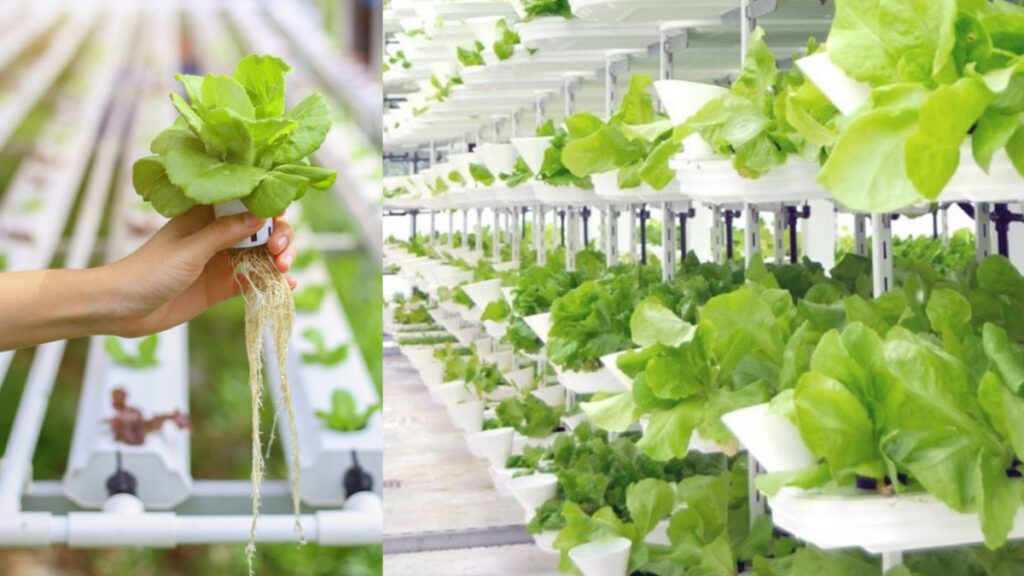Urban farming in the USA is more than just a trend—it’s a sustainable movement transforming how food is grown, distributed, and consumed in American cities. With rising food costs, concerns about food security, and the need for environmentally conscious living, urban farming is gaining popularity as an innovative solution. But what exactly does it mean?
In this article, we’ll explore the definition of urban farming in the USA, its various forms, benefits, challenges, examples from across the country, and how you can get started—even in the smallest urban space.
What Is Urban Farming?
Urban farming, also known as urban agriculture, refers to the practice of cultivating, processing, and distributing food in or around urban areas. Unlike traditional farming, which usually happens in rural regions, urban farming brings agriculture right into cities and towns—often in backyards, rooftops, vacant lots, or community gardens.

Key Characteristics:
- Utilizes limited space: rooftops, balconies, or vertical systems.
- Includes crop production and animal husbandry: vegetables, herbs, fruits, chickens, and even bees.
- Promotes local food production: reducing dependency on supply chains.
In the USA, urban farming takes many creative forms—from hydroponic systems in New York City basements to vertical farms in Chicago and community gardens in Detroit.
Why Is Urban Farming Important in the USA?
Urban farming addresses some of the most pressing issues in American cities:
1. Food Deserts and Accessibility
Many urban neighborhoods lack access to fresh produce. Urban farms provide healthy, affordable food options where supermarkets are scarce.
2. Environmental Sustainability
Growing food locally reduces transportation emissions, packaging waste, and food spoilage. Some urban farms also use composting and rainwater harvesting.
3. Community Engagement
Urban agriculture promotes social connection, community development, and education. Community gardens and co-ops bring people together to grow and share food.
4. Economic Opportunity
It offers job creation, entrepreneurship, and side income opportunities through local produce markets, farmer’s markets, or even subscription-based models like CSAs (Community Supported Agriculture).
Common Types of Urban Farming in the USA
There is no one-size-fits-all model. Here are some of the most popular urban farming methods:
1. Container Gardening
Perfect for small spaces like balconies or patios. Grow vegetables and herbs in pots and recycled containers.
2. Rooftop Farming
Utilizing the flat roofs of buildings to grow crops. Popular in New York, Chicago, and Los Angeles.
3. Vertical Farming
Stacking layers of plants in controlled environments. Saves space and uses less water. Often seen in tech-driven cities.
4. Hydroponics and Aquaponics
Soil-free systems that use nutrient-rich water to grow plants. Aquaponics adds fish, creating a self-sustaining ecosystem.
5. Community Gardens
Shared plots of land where locals grow food together. Ideal for building neighborhood ties.
6. Backyard or Front Yard Farms
Converting your own yard into a productive farm is becoming common in suburban areas and even inner-city zones.
Real-Life Examples of Urban Farming in the USA
Let’s look at some inspiring urban farming initiatives that are making a difference:
🔸 The Urban Food Forest at Browns Mill – Atlanta, GA
The largest food forest in the USA, offering free fruits, vegetables, and herbs to residents. It includes walking trails, a community garden, and fruit orchards.
🔸 Growing Power – Milwaukee, WI
A pioneering organization that transformed abandoned lots into greenhouses and fish farms, producing thousands of pounds of food yearly.
🔸 Brooklyn Grange – New York, NY
A rooftop farm that grows over 50,000 lbs of organic produce each year. They also host educational workshops and rooftop dinners.
🔸 Detroit Black Community Food Security Network – Detroit, MI
Operating a seven-acre urban farm and promoting food justice and policy reform.
Benefits of Urban Farming in the USA
✅ Healthier Communities
Fresher, chemical-free produce means improved diets and health outcomes.
✅ Stronger Local Economies
Money spent on local food stays in the community, supporting local jobs.
✅ Greener Cities
Urban farms improve air quality, reduce heat, and add green space.
✅ Educational Opportunities
Schools and non-profits use gardens to teach children and adults about biology, sustainability, and nutrition.
Challenges Facing Urban Farmers
While the benefits are plentiful, urban farmers face unique challenges:
- Zoning laws and regulations: Not all cities allow urban agriculture without permits.
- Limited space: High-density areas may have limited land access.
- Startup costs: Setting up hydroponic or rooftop farms can be expensive.
- Water access and usage restrictions
- Pests and environmental conditions: Managing urban pests without chemicals is tough.
Many cities are now updating policies to be more urban-ag-friendly, such as allowing chickens, bees, and composting initiatives.
How to Start Urban Farming in the USA
Thinking of growing your own food in the city? Here’s a beginner’s guide:
Step 1: Assess Your Space
Rooftop? Balcony? Windowsill? Community garden? Every space counts.
Step 2: Pick the Right Plants
Start with easy, fast-growing crops like:
- Lettuce
- Tomatoes
- Herbs (basil, mint, chives)
- Peppers
- Strawberries
Step 3: Choose Your Farming Method
- Soil-based if you have ground access.
- Hydroponics or aquaponics for tech lovers.
- Raised beds for better drainage and pest control.
Step 4: Invest in Tools
Basic tools, organic seeds, compost, and containers.
Step 5: Join Local Communities
Network with other growers via Facebook groups, local workshops, or community garden projects.
Urban Farming and the Future of American Cities
Urban farming isn’t just about growing food. It’s about:
- Building resilient cities.
- Encouraging self-reliance.
- Supporting local economies.
- Strengthening community ties.
As climate change and urbanization continue, urban farming will be key in shaping sustainable, livable cities.
FAQs: What People Ask About Urban Farming in USA
🔹 Is urban farming legal in the USA?
Yes, but local zoning laws vary. Check your city’s regulations before starting.
🔹 Can urban farming be profitable?
Yes, especially with niche markets (e.g., microgreens, organic herbs) or community-supported models.
🔹 How much land do I need?
Urban farms can thrive in just a few square feet—even on windowsills or walls.
🔹 Is hydroponics better than soil?
It depends. Hydroponics yields faster results but requires setup costs and monitoring.
Final Thoughts
Urban farming in the USA is a dynamic and powerful movement. Whether you’re growing herbs on your fire escape or running a rooftop farm, you’re part of a larger mission: to make our cities healthier, more sustainable, and more connected to the food we eat.
With supportive policies, education, and community action, urban farming is set to play a vital role in the future of American food systems. Start small, grow big—and remember, even a single tomato plant on a city balcony is a step toward a greener future.
